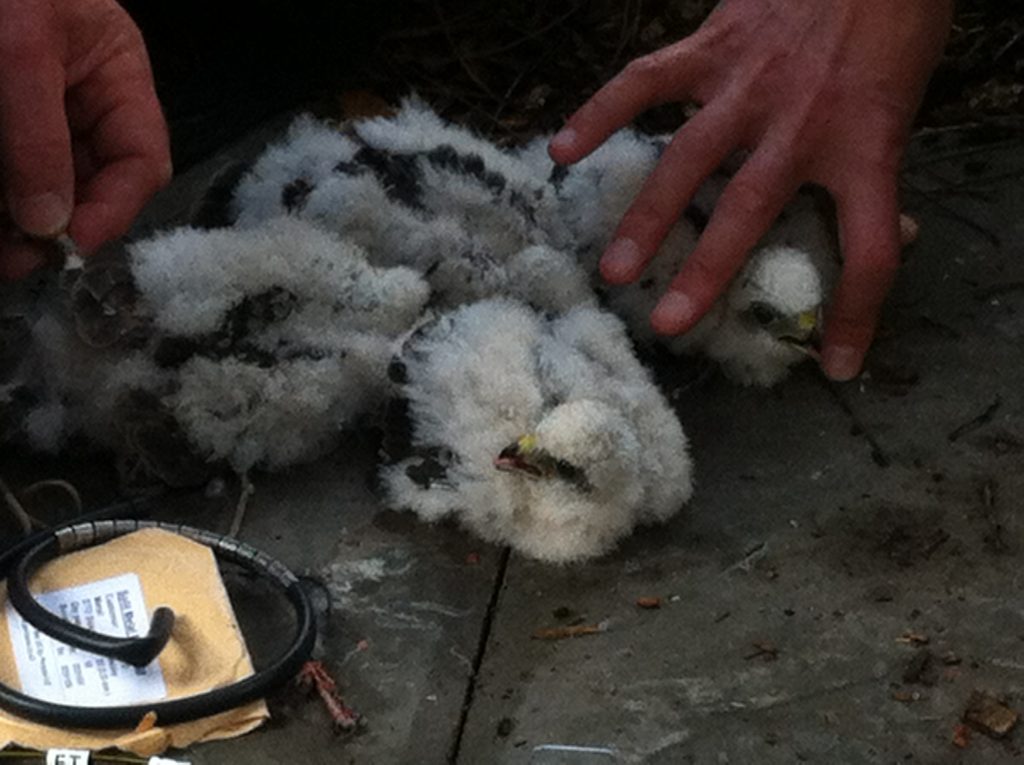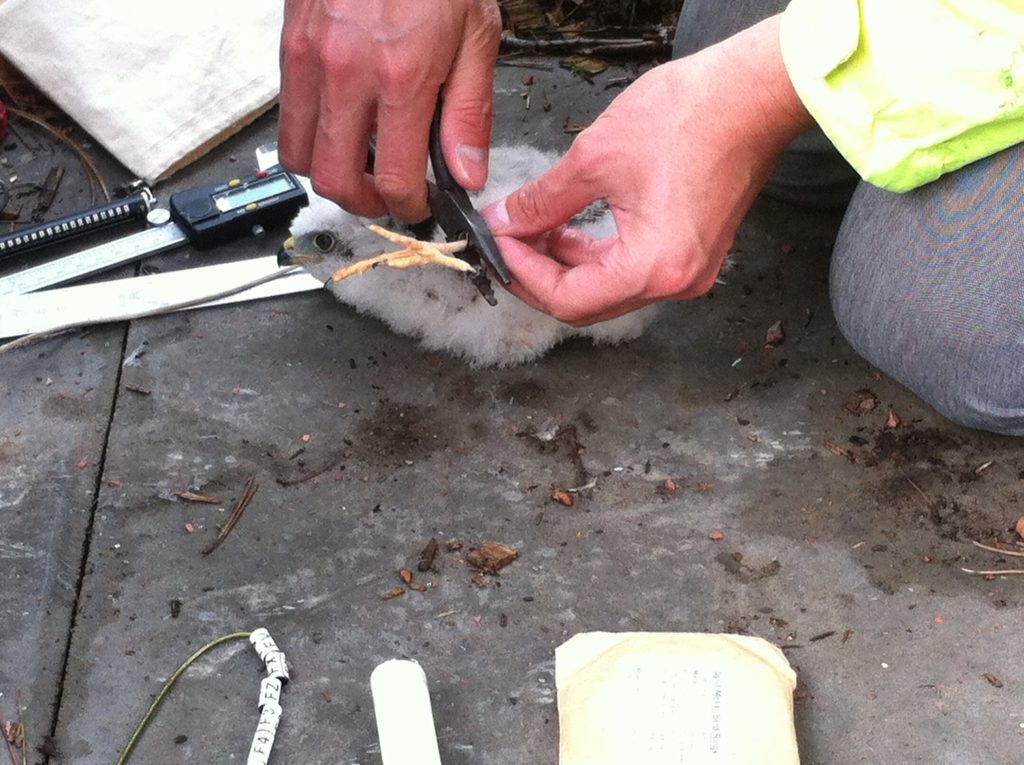Since the last post I have kindly been provided with further pictures from the ringing when Will Hinchliffe took the photo he posted on Twitter. Peter Wilson, also of the arboricutural team, was on the ground where the folk were doing the ringing. Thanks are due to him for the photos and he also sent a description of the activities that day (apologies to the people involved as I don’t know their names):
“The guys asked myself and Will to climb the trees and put the sparrow hawk chicks in the rucksack to send them down. Then they tagged the legs, weighed them, checked what sex the chicks were and measured the birds wingspan and the length of the leg. Then they bagged up the chicks and resent them back up the tree for us to place back in the tree. We were told to leave the chicks in the nest if they were trying to move to the edge of the nest when we first went up. They will try to fly if that happened and they could do damage to themselves.”
You can see in the photo above some of the rings which are put on their legs (bottom-left corner) and this is a photo of one of the chicks being ringed:
Ringing birds is a particularly useful way of keeping track of individual birds for further study. When the chicks have become fully fledged they will leave the nest and fly to find territory of their own. Sometimes it is possible to place quite large rings called Darviks on birds which can be read by close observation with binoculars. The picture below shows some of the white Darviks in the bottom-middle of the photo (they are also in the bottom-left of the photo above):
Click on the link below to download a short video clip of one of the chicks being ringed:
From observation of birds with rings it has been possible to determine that once fledged sparrowhawks can travel quite a distance. According to Hugh Coventry they tend to fly west from the Botanics and use the Esk and Almond valleys on their journey. He also recommended a book to me on sparrowhawks by Ian Newton called simply “The Sparrowhawk”.
Also an update on the progress of the sparrowhawks so far. Hugh reports that five of the young fledged from one of the nests and we have observed that there are four at the other nest who seem to be doing well and getting close to leaving. They will probably still be in the vicinity over the next few weeks even once they have left the nest.




Drew McNaughton
I just found a page on the Edinburgh Hawkwatch website that gives some more information about how to get involved in observing Sparrowhawks and what to look out for with the rings they have on them:
http://www.edinburghhawkwatch.org.uk/node/597